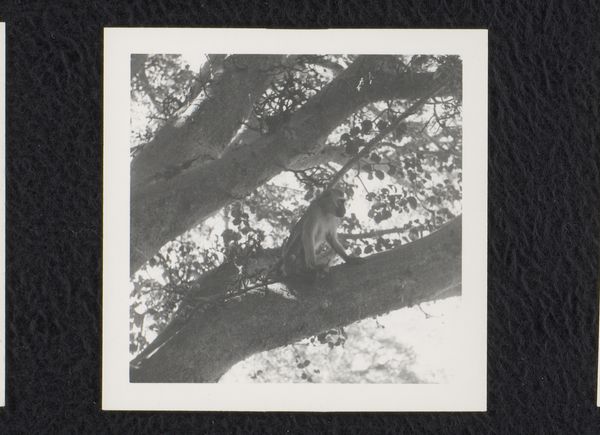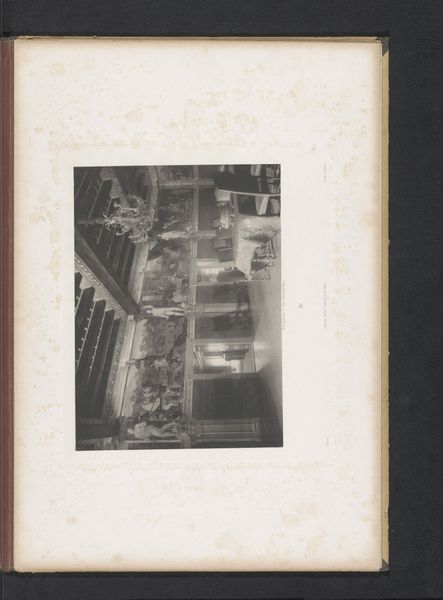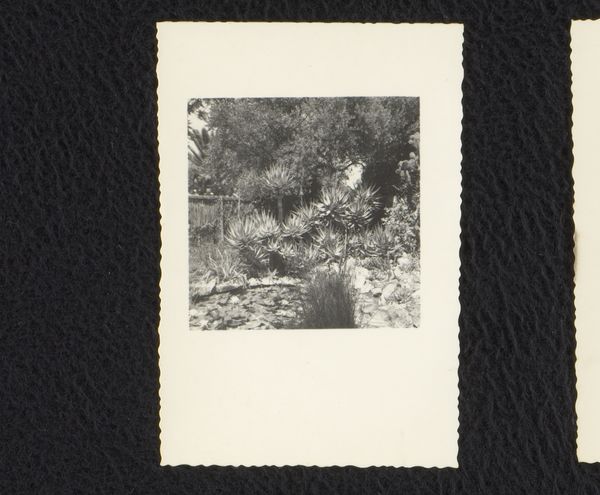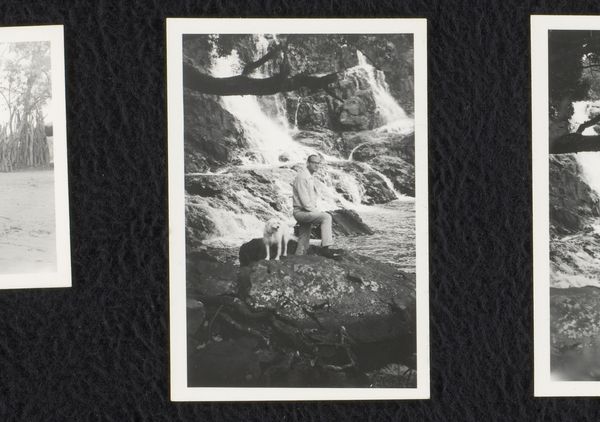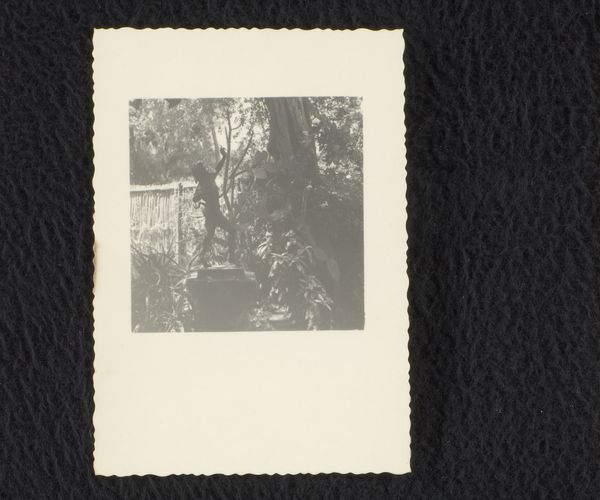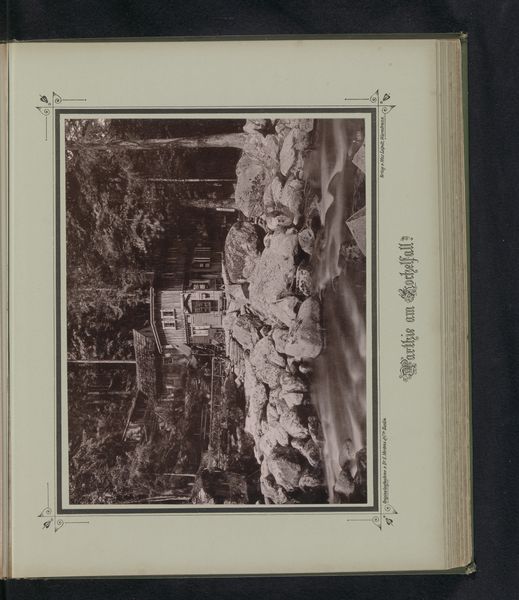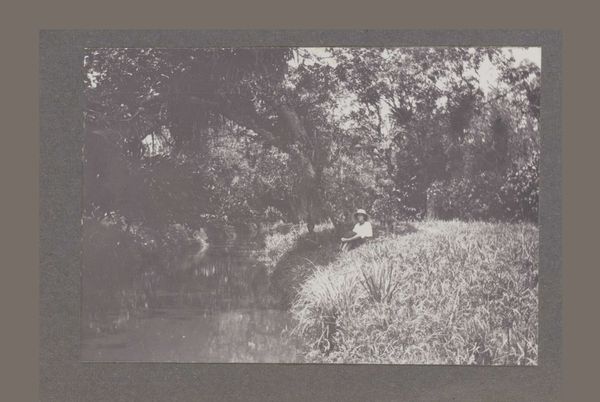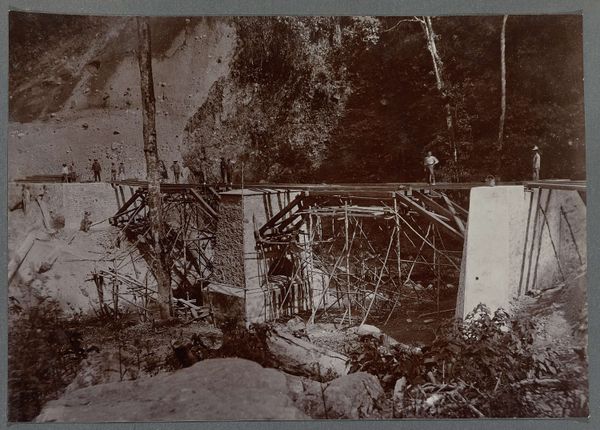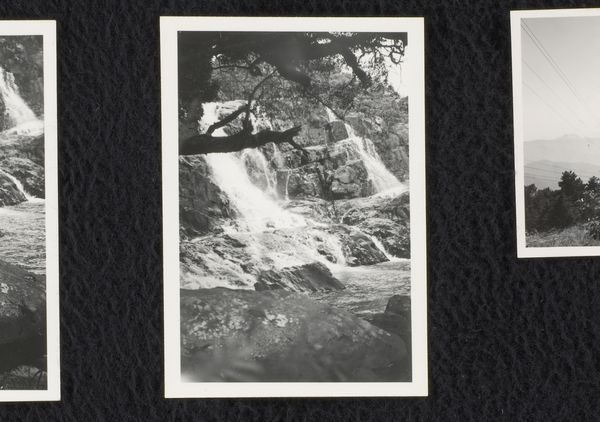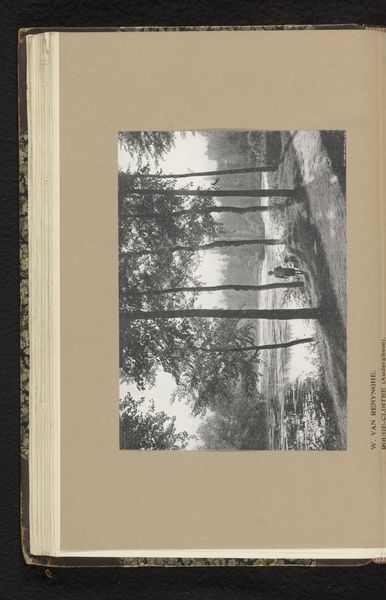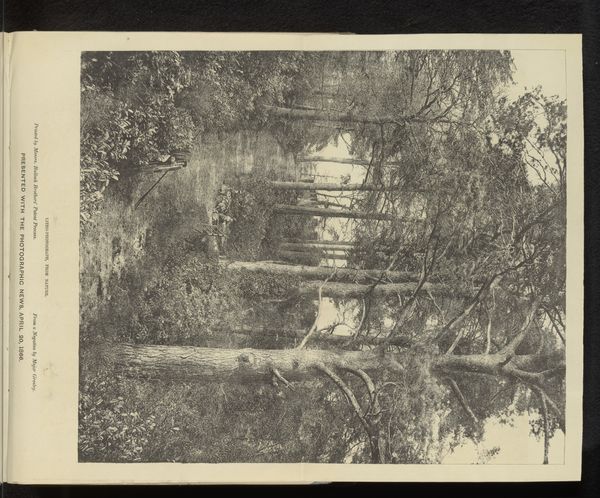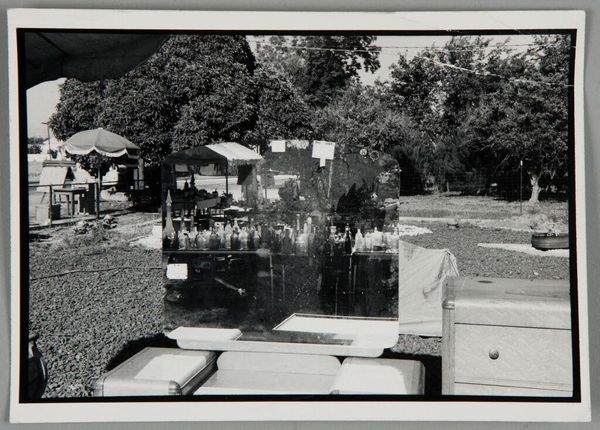
Vijver, mogelijk op de boerderij van Willem van den Berg in Transvaal, Zuid-Afrika 1967 - 1971
0:00
0:00
photography
#
landscape
#
street-photography
#
photography
Dimensions: height 90 mm, width 90 mm
Copyright: Rijks Museum: Open Domain
Curator: What strikes me immediately is the calm, contemplative atmosphere. The high-contrast black and white tones, the lily pad floating on the surface of the pond; there’s an incredible sense of peace. Editor: Looking at this photograph by Willem Jacob van den Berg, taken between 1967 and 1971, titled "Pond, possibly at Willem van den Berg's farm in Transvaal, South Africa,” what really grabs me is the cage-like structure above the pond. Curator: It’s a fascinating visual element. It almost creates a feeling of constraint, which paradoxically intensifies the sense of serene beauty underneath, that pristine water lily against the gloom below. I find my eyes are pulled directly to the lily’s light, almost an emblem of resilience. Editor: And notice the materials used—simple wood, the mesh itself; what purpose do they serve? Perhaps they were constructed to keep the local fauna from gobbling up the pond’s precious life. I imagine Van den Berg finding those materials, repurposing them, solving a real-world problem with ingenuity. There’s labor in those decisions, a quiet struggle represented in the photograph. Curator: You know, the lily itself carries such cultural weight. In many Eastern philosophies, it represents purity, enlightenment, rebirth. It thrives in muddy waters yet remains unsoiled. Perhaps that is a reflection of Van den Berg's emotional or spiritual landscape while he lived and worked in South Africa. Editor: It certainly makes you consider his experience there. Consider, too, how that photograph might reflect labor practices in South Africa at that time—the means by which land like the farm was cultivated and sustained. It begs a viewer to inquire: Whose hands built that frame? Whose labor maintained that pond? Curator: I see the lily as a counterpoint to this reflection, but the questions themselves provide context and richness to how we appreciate the image, adding more dimension than immediately meets the eye. Editor: Yes. Examining how things are made allows us to have a more holistic conversation about context. Curator: Agreed. Ultimately, the image holds more symbolic complexity and beauty than I first expected. Editor: Indeed. And reflecting on the material origins and social context provides a fresh way to interpret such photographs.
Comments
No comments
Be the first to comment and join the conversation on the ultimate creative platform.
